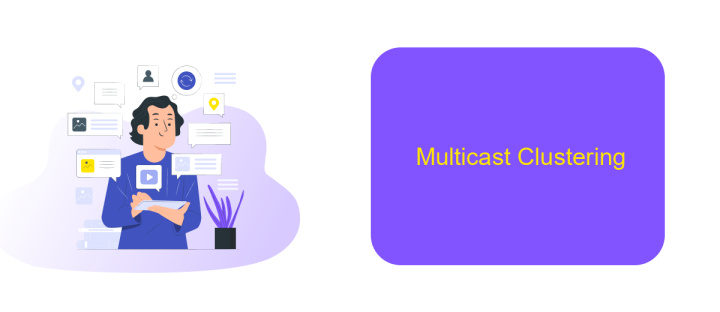Unicast Vs Multicast Cluster MuleSoft
In the realm of MuleSoft, understanding the differences between unicast and multicast cluster communication is crucial for optimizing performance and ensuring reliable message delivery. This article delves into the specifics of each method, comparing their advantages and use cases to help you make an informed decision for your MuleSoft deployment. Whether you're scaling up or ensuring fault tolerance, the right choice can significantly impact your system's efficiency.
Unicast vs Multicast Cluster MuleSoft
In the context of MuleSoft clustering, understanding the differences between unicast and multicast communication is crucial for optimizing performance and reliability. Unicast involves direct communication between nodes, where each message is sent individually to a specific node. This method is straightforward but can become inefficient with an increasing number of nodes due to the higher network traffic.
- Efficiency: Unicast can lead to network congestion in larger clusters, while multicast reduces traffic by sending a single message to multiple nodes simultaneously.
- Scalability: Multicast is generally more scalable as it handles the distribution of messages to numerous nodes more effectively.
- Configuration: Unicast requires less initial setup but can become complex as nodes increase. Multicast requires proper network support and configuration but simplifies communication in larger clusters.
Choosing between unicast and multicast for your MuleSoft cluster depends on your specific needs and infrastructure. For seamless integration and configuration, services like ApiX-Drive can be instrumental in setting up and managing these clusters efficiently, ensuring optimal performance and reliability for your integration solutions.
Introduction

In the realm of enterprise integration, understanding the differences between unicast and multicast clustering is crucial for optimizing performance and reliability. MuleSoft, a leading integration platform, offers robust solutions for both unicast and multicast cluster configurations. These configurations play a pivotal role in determining how data is distributed and processed across various nodes in a network, impacting the efficiency and scalability of the integration processes.
Choosing the appropriate clustering method depends on several factors, including network architecture, data volume, and specific use cases. For instance, unicast clustering is often favored for its simplicity and ease of configuration, making it suitable for smaller networks. On the other hand, multicast clustering can significantly enhance performance in larger, more complex environments by reducing network traffic and improving data distribution. Tools like ApiX-Drive can further streamline these integrations, offering seamless connectivity and automation capabilities that simplify the setup and management of both unicast and multicast clusters.
Unicast Clustering

Unicast clustering is a method used in MuleSoft to ensure that all nodes in a cluster communicate directly with each other. This approach is ideal for smaller clusters where the number of nodes is limited, as it simplifies the configuration and reduces overhead. In a unicast cluster, each node is aware of the other nodes and communicates with them directly, avoiding the need for intermediary brokers or routers.
- Direct node-to-node communication: Each node in the cluster knows the address of every other node.
- Reduced latency: Direct communication minimizes the time taken for messages to travel between nodes.
- Simplified configuration: Unicast clustering requires fewer configuration steps compared to multicast.
One of the services that can be integrated with MuleSoft for enhanced unicast clustering is ApiX-Drive. This service allows for seamless integration and automation of workflows, ensuring that data flows smoothly between different nodes and systems. By using ApiX-Drive, organizations can easily set up and manage their MuleSoft clusters, ensuring optimal performance and reliability.
Multicast Clustering

Multicast clustering in MuleSoft enables the distribution of messages to multiple nodes within a cluster simultaneously. This method ensures that each node receives the same message, facilitating parallel processing and enhancing the reliability of the system. It is particularly useful in scenarios where high availability and fault tolerance are critical.
One of the main advantages of multicast clustering is its efficiency in resource utilization. By broadcasting messages to all nodes at once, it reduces the time and network bandwidth required compared to unicast clustering, where messages are sent individually to each node. This makes it an ideal choice for large-scale integrations and real-time data processing.
- Efficient resource utilization
- Enhanced fault tolerance
- Improved message delivery speed
- Better support for real-time data processing
For organizations looking to streamline their integration processes, tools like ApiX-Drive can be highly beneficial. ApiX-Drive offers seamless integration capabilities, allowing you to easily configure and manage your multicast clustering setup in MuleSoft. This ensures that your systems remain robust, scalable, and efficient.
Conclusion
In conclusion, the choice between unicast and multicast for a MuleSoft cluster largely depends on the specific requirements and constraints of your system. Unicast is simpler to set up and manage, making it suitable for smaller clusters or environments where network configurations are tightly controlled. On the other hand, multicast offers better scalability and efficiency, particularly in larger clusters, but requires more complex network configurations and support from the underlying infrastructure.
When configuring integrations, tools like ApiX-Drive can significantly simplify the process, providing a seamless way to connect various services and applications. Whether you opt for unicast or multicast, leveraging such integration platforms can enhance the reliability and performance of your MuleSoft cluster. Ultimately, understanding the trade-offs and aligning them with your organizational needs will help you make an informed decision that optimizes both performance and resource utilization.


FAQ
What is the primary difference between Unicast and Multicast in a MuleSoft cluster?
How does Multicast improve performance in a MuleSoft cluster?
Is Unicast more secure than Multicast in MuleSoft clusters?
Can I switch from Unicast to Multicast in an existing MuleSoft cluster?
What tools can help automate the configuration of Unicast and Multicast in MuleSoft?
Time is the most valuable resource for business today. Almost half of it is wasted on routine tasks. Your employees are constantly forced to perform monotonous tasks that are difficult to classify as important and specialized. You can leave everything as it is by hiring additional employees, or you can automate most of the business processes using the ApiX-Drive online connector to get rid of unnecessary time and money expenses once and for all. The choice is yours!

